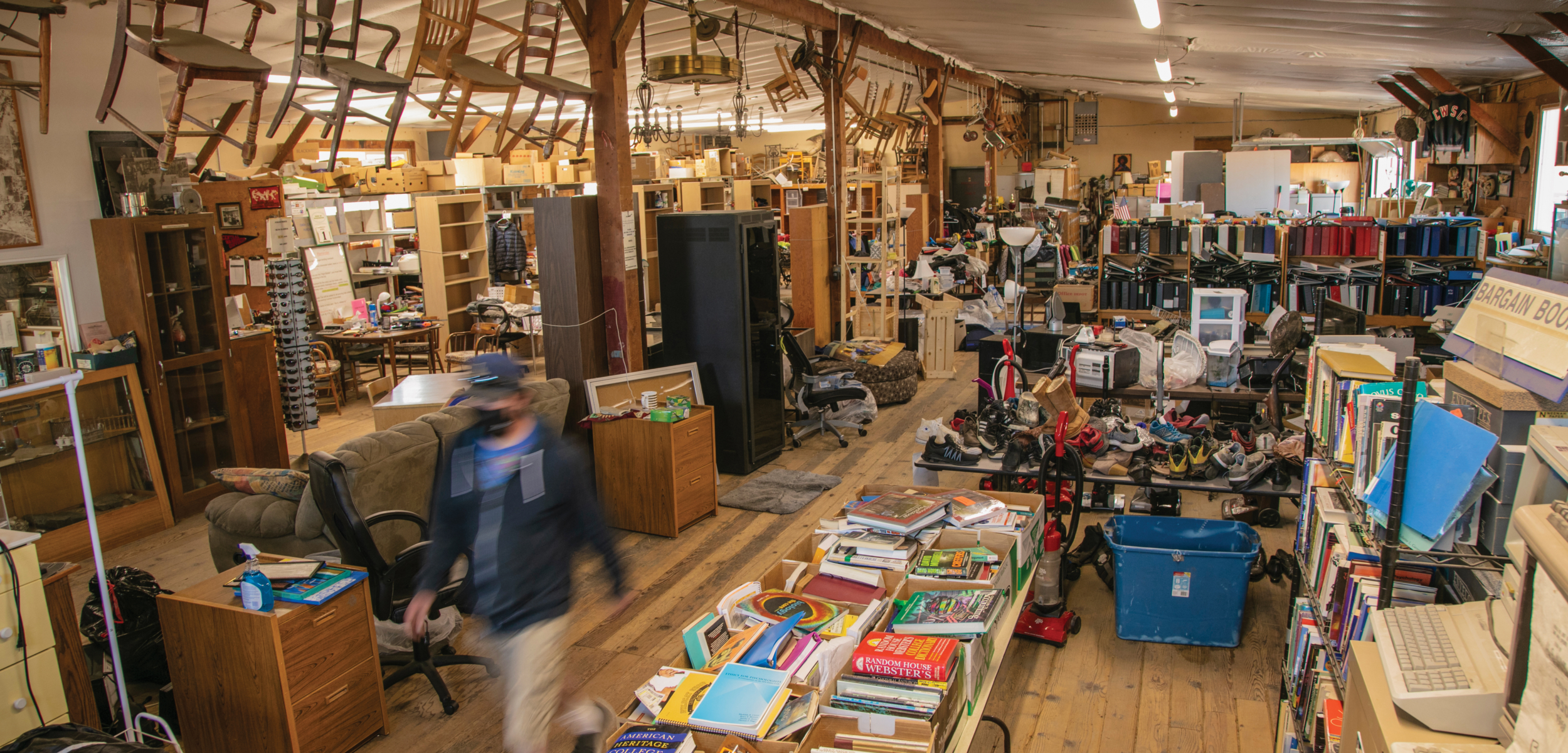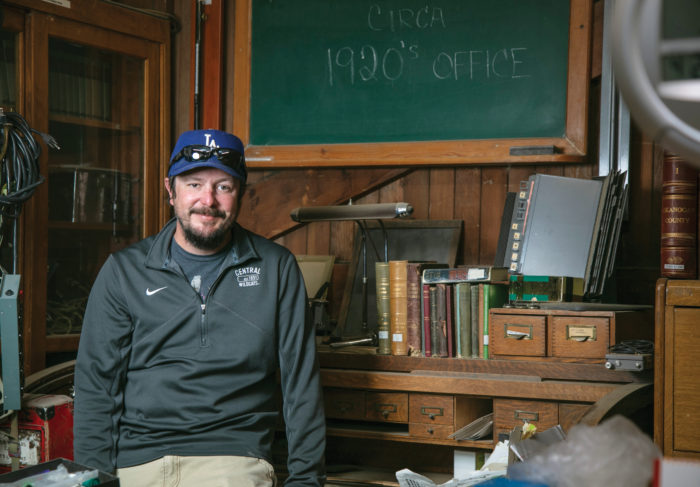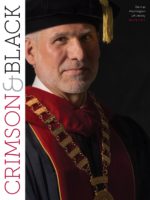
It looks more like a piece of elegant, fine furniture than something so functional. Three-foot high glass oak doors frame a large, shiny clock face, rows of electronic switches, some type of metal cylinder, four smaller clock faces wrapped in brass, and other mechanisms.
A small, white sign describes the fabulous contraption as “Master Clock,” and notes that it once “rang all bells and controlled all clocks in Barge Hall. As late as 1950 it was used to control all clocks on campus.”
It’s just one of the nearly 2,000 artifacts collected and preserved at the CWU Surplus Warehouse. The facility is overseen by Jason Bakeman, who could be called the caretaker of CWU’s legacy. For the past 18 years, Bakeman has worked in the university’s surplus warehouse, determining which items no
longer needed by the school can be sold as surplus. He also tries to save one of nearly every item acquired by the warehouse.
“My former co-worker, David Moffat, started this in 1988 or 1989,” Bakeman explained. “He was kind of a historian himself and he liked to get one of everything. So, there’s one gravy boat from dining from Sue Lombard [Hall], one plate, one of each style of chair, which you can see hanging.”
Moffat, who recently retired, worked with Bakeman to assemble what is now a sort of unofficial museum of Central historical artifacts, which are displayed in the surplus warehouse at 14th and B streets in Ellensburg.
“It’s one of those things, it’s kind of a hidden gem,” he said of the warehouse. “And a lot of people, even those who work here [at Central], never know it’s here.”
Walking through the 5,000-square-foot wooden warehouse—once a freight house for the now defunct Milwaukee, St. Paul, and Pacific Railroad, which intersected CWU—Bakeman explains the origins of everything from chairs and light fixtures hanging from the ceiling to items inside dusty glass display cases scattered about the building.
Bakeman said that whenever the university is remodeling or tearing down a campus building, such as the recent demolition of Hertz Hall, “they give me a key, a bag of tools, and tell me to go to town.”
Since Moffat began preserving Central artifacts more than three decades ago, Bakeman said Surplus has collected far more than can fit in the old freight building. As a result, some of the larger pieces of equipment are kept in a separate, 40-foot shipping container.
Bakeman, who calls himself an audiophile, said he appreciates the old electronics that show up at Surplus. He proudly points to a small black-and-white monitor atop several boxes of electronic equipment and notes “this was the first computer on campus, built by the computer science professors.”
Other noteworthy items in the museum include an original oak dresser from Kamola Hall; a small tricycle from the elementary school that operated in Hebeler Hall; and a large sousaphone used in music classes.
“Whenever they do one of these remodels or tear-downs, I get to find whatever is loose,” he said. “That’s the fun.”

Jason Bakeman
CWU Surplus Fun Facts:
• Ten to eleven surplus sales/auctions are conducted each year.
• Typically, 220 to 250 items are up for auction at each sale.
• The items people line up to buy are usually fixed-price computers and appliances, such as small refrigerators.
• Bakeman said many items are purchased and repurposed by buyers, such as converting a Mac computer into an aquarium, using discarded library newspaper racks for blanket drying stands, and making quilts out of old denim clothing.
• To find out when the next surplus sale and auction is scheduled, go to the CWU Surplus Facebook page or send an email to Bakeman (bakemanj@cwu.edu) to be added to a mailing list.






comments powered by Disqus